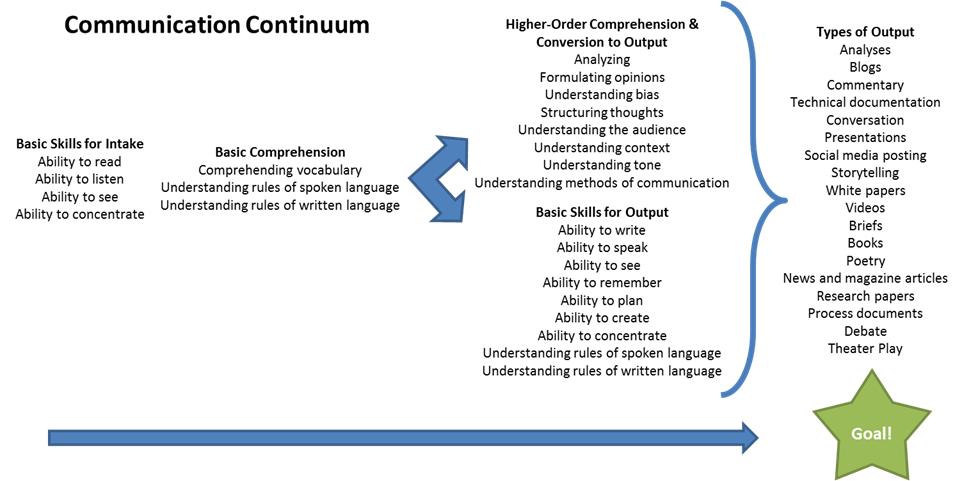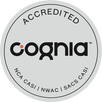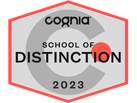IDEAVENTIONS ACADEMY
 Today’s topic is about our philosophy on Language Arts, or English. It's being posted early because I get to go have fun at the US Science and Engineering X-STEM Symposium happening today! In retrospect, my personal philosophy about how English (aka Language Arts) should be taught was defined in Middle School when I took GT Humanities (combined English/American History) from the one teacher that had the most influence in my educational success, then reinforced through my experiences in the workplace. In her class, English wasn’t learned in isolation. My reading level was stretched through the texts that we read, both fiction and nonfiction. My writing and analysis was developed through a series of assignments that included creating a newspaper, creating a diorama, drawing a political cartoon, as well as completing the traditional book report or writing assignment. Most importantly, she taught me how to read a newspaper and understand bias and she challenged me to research in order to support my opinions. Finally, she believed enough in me to take a chance on me, this kid who had just learned how to speak English five years before, and asked me to be the Editor-in-Chief of the school newspaper. Goal In short, we view the primary goal of Language Arts in primary and secondary education, as learning how to communicate effectively both orally and through writing. This deceptively simple statement is made up of a myriad of physical and mental skills and processes that need to come together, which I find easier to explain using a diagram. This process is so complex and is individual to each child’s experiences, strengths, weakness, likes and dislikes. Additionally, when viewed from an academic standpoint, it is interrelated with other academic subjects, such as science, history, and art. How In line with our philosophy in other subjects, where the work is hands-on and has a purpose, we look at the study of Language Arts, like in Math and Engineering, from a “So what?” point of view. With that in mind, Language Arts is integrated into Humanities, Science and Engineering to give it purpose and context, but is also being done with the child’s unique strengths and weaknesses in mind. Let’s look at how that is done. Humanities: Creative and Analytical Communications The clearest and easiest point of integration is with History and Social Studies. When one studies American History or World History and Cultures, to truly understand what shapes that history, one has to understand the culture. In order to understand the culture, one needs to understand its people. And to understand its people, one needs to understand their literature, their music and their art. This can be done through analysis of primary source documents, reading of biographies and autobiographies, reading fiction or historical fiction, reading poetry, as well as news articles. Through continued exposure to challenging material, children’s vocabulary will continue to grow. Output can come in many forms. It can be a written analysis, it can be a documentary, it can be a poem, it can be a Literature Circle, or it can be a political cartoon. All of these types of output require understanding the topic. By giving the teacher the opportunity to work in a small classroom with 8-10 kids, the teacher will have the opportunity to learn the strengths and weaknesses of each child, and to give kids choices in how to present output. We fully expect that kids will gravitate to what is easiest for them, and that’s ok. We’re first going to focus on building trust with the teacher and with each other. Then, when that trust has been built, children can then be challenged to expand on choosing output outside of their comfort zones. When the individual child is ready, then coaching in writing and grammar will begin for that student. To close out how Language Arts is included in the Humanities curriculum, the only homework all students will have every day is to read from (or listen to) a challenging book of their choice for at least 30 minutes. Science: Technical Communications Another major integration point is between Language Arts and Science. While there’s a lot of experimentation that occurs with science, scientists need to know how to present their results. Scientists also need to know to justify their idea. And even more basic than that, scientists need to be able to research a topic in order to understand it. The type of writing and communication that you do in a natural science classroom or laboratory is technical writing. Sentence structure, vocabulary, organization of ideas and message are all still important, but the audience is different and the tone is different. In science, students will experience a different, yet very important, type of Language Arts education. Engineering: Persuasive and Technical Communications Our Engineering classes present yet another opportunity to hone in students’ communications skills. From technical design specifications, to a website that describes their product, students will get additional education in technical communications, as well as in persuasive language. Will 4th-grade students entering the school know how to do this? We don’t think so. It’s our job to expose them to the methods for communicating, memorializing, and selling their projects. I could go on and on. In Art, the Graphic Novels unit integrates storytelling in a unique way and in Community Service, students will practice (or learn) about correspondence and current events. In conclusion, the teaching opportunities for Language Arts are tremendous. It our responsibility as a school to find those teaching opportunities and incorporate them in a way that is interesting, meaningful, and that makes sense to the kids. Resources specific to Language Arts, that we like:
If you have others you like, please share them! I love learning about other learning options and creative teaching methods out there.
0 Comments
Your comment will be posted after it is approved.
Leave a Reply. |
AuthorJuliana Heitz is co-founder of Ideaventions Academy and is very excited to share the thinking behind the Academy. Archives
October 2023
Categories |
Copyright © 2010-2024| 12340 Pinecrest Road, Reston, Virginia 20191 | 703-860-0211 | [email protected] | Tax ID 27-2420631 | CEEB Code 470033
 RSS Feed
RSS Feed




